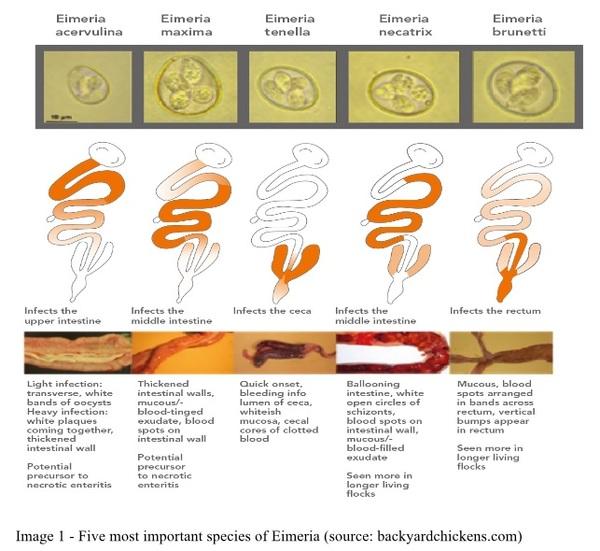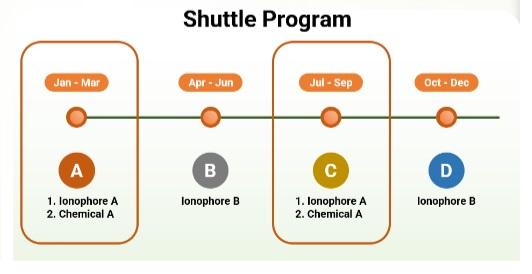Coccidiosis in poultry
Published: June 8, 2023
By: Dr. Ankur Gupta / Natural Remedy
Coccidiosis is caused by protozoa of the phylum Apicomplexa, family Eimeriidae. This disease is of worldwide occurrence and every year costs the poultry industry many millions of dollars to control.
Most species affecting poultry belong to the genus Eimeria and infect various intestinal sites. The disease causes high morbidity ranging from an acute, bloody enteritis with high mortality, to subclinical disease. However, the presence of intestinal lesions depends on the Eimeria species. The most important poultry Eimeria species are:
E. tenella, E. necatrix, E. acervulina, E. maxima, E. brunetti, E. mitis, and E. praecox. The disease course is rapid (4–7 days) and is characterized by parasite replication in host cells with extensive damage to intestinal mucosa.

ETIOLOGY
- Eimeria necatrix and E tenella are the most pathogenic in chickens causes extensive hemorrhage. E. acervulina, E. maxima and E. brunetti are other pathogenic species of emeria affecting poultry.
- Coccidia are almost universally present in poultry-raising operations, but clinical disease occurs only after ingestion of relatively large numbers of sporulated oocysts by susceptible birds. Both clinically infected and recovered birds shed oocysts in faces, which contaminate feed, dust, water, litter, and soil. Oocysts may be transmitted via equipment and personnel (e.g., shoes) as well as the presence of insects (e.g., flies) and rodents.
- Fresh oocysts are not infective until they sporulate; under optimal conditions (70°–90°F [21°–32°C] with adequate moisture and oxygen), this requires 1–2 days. The prepatent period is 4–7 days.
- Sporulated oocysts may survive for long periods, depending on environmental factors. Oocysts are resistant to some disinfectants commonly used around livestock but are killed by freezing or high environmental temperatures.
- Pathogenicity of coccidiosis is influenced by host genetics, nutritional factors, concurrent diseases, age of the host, and species of the coccidia.
- Older birds are usually more resistant than young birds because of earlier exposure to infection.
ANTI COCCIDIAL PROGRAM
A) Shuttle programs
A common practice to partially solve coccidiosis problem is to use anti-coccidial ‘shuttle’ programs that rotate through different periods of the bird's life. This method has a good chance of eliminating the parasites that demonstrated resistance to a single antimicrobial. A variation of the same principle consists of changing coccidiostats between flocks. Most suitable drug is used for starter, while another drug is used for grower and finisher. Drug withdrawal period is the most important consideration for drugs that will be used in finisher feeds.

B) Rotation Programme
Rotation means that a conscious decision is made to change the drug(s) used at a given time in the future i.e., every four months, after two crops, go to a winter and summer program, etc. The alternative to a rotation program is a continuous program where the same drug(s) are used indefinitely, usually until a problem develops, or until a new product is introduced on the market. Shuttle programs fit into rotation programs.
C) Bio shuttle programme
A bio-shuttle program combines the administration of a vaccine combined with feeding of anticoccidial ionophores or chemicals in the grower feed, or grower and finisher feeds. In such a prevention program, the specific timing, and dosages of both depend on the efficacy of the ionophore or chemical being used in the specific operation and timing of the coccidiosis cycling. The benefit of bio-shuttle programs is the ability to lower peak cycling of coccidiosis while still developing immunity.

Related topics:
Authors:
Natural Remedies Private Limited
Recommend
Comment
Share

Would you like to discuss another topic? Create a new post to engage with experts in the community.








.jpg&w=3840&q=75)